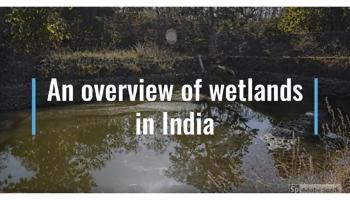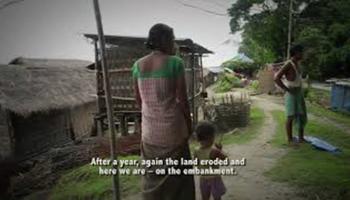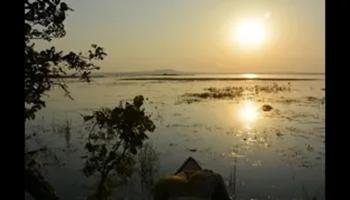Lakes, Ponds and Wetlands
Is it worth the salt?
Posted on 12 Dec, 2017 12:22 PMThe fields are silvery white with raw salt crusts in the vicinity of Nawa, a small town on the northwestern banks of Sambhar lake, India’s largest inland lake. Nawa lies about 90 kilometres east of Jaipur. Also an extensive saline wetland and a Ramsar site, the blinding white salt flats stretch as far as one can see.

Soil health is declining in India: Report
Posted on 12 Dec, 2017 11:24 AMCarbon content in India's soil decreases

Saving Chorao through its people
Posted on 10 Dec, 2017 12:37 PMLocated just 5 km away from the capital city of Panaji, Chorao island, along the Mandovi river, is one of the largest islands in Goa. The island has a unique ecosystem that is different from the other sanctuaries in the state.

SBM update: Many districts to be open defecation free
Posted on 05 Dec, 2017 04:10 PMMore than 50 percent districts yet to be declared open defecation free

Study claims railways biodigesters ineffective
Posted on 28 Nov, 2017 01:50 PMRailways biodigesters are not better than septic tanks: IIT study

Toilet use in Uttarakhand: A mountainous issue
Posted on 23 Nov, 2017 02:36 PM“Sometimes I go for open defecation, sometimes I use the toilet. It’s not like I always have to use the toilet. When I go for work here and there, I defecate in the jungle,” says Renu from one of the remote villages in Tehri Garwal district of Uttarakhand when asked why she does not use latrines every day.

India ranks low on sanitation index: Report
Posted on 20 Nov, 2017 02:20 PMIndia has the highest number of people without access to toilets: Report

In Memoriam: A Tribute to Our Dear Friend Latha Anantha
Posted on 18 Nov, 2017 07:23 PMLatha, well known environmental activist and researcher from Kerala, is no more with us physically. Though many of us knew that she was battling with cancer for the last 3-4 years, closely following her ups and downs and also knowing that over the last two weeks or so her health was steadily deteriorating, the question still comes up time and again, why was she taken away from us so early?

Saving glacial lakes by mapping them
Posted on 17 Nov, 2017 01:20 PMBursting of glacial lakes is a major cause of concern in the context of climate change. The retreat of glaciers is expected to increase the number of glacial lakes and also expand the size of existing ones, posing threats for catastrophic floods.

JalKalp: Water sands impurities
Posted on 13 Nov, 2017 12:11 PMUrmila Devi lives in Chaitabazaar village which is barely five kilometres from the eastern bank of the Burhi Gandak river. It is located in a particularly flood-prone area of East Champaran in north Bihar. The drinking water quality in this area is poor. The recurrent floods only make it worse.








